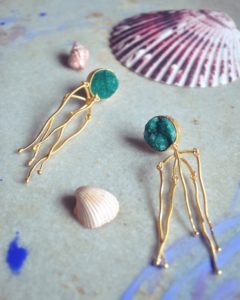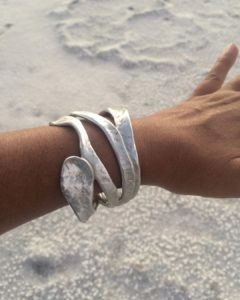At this moment we are still extremely busy imagining that the lockdown will end, the restrictions on weddings and gatherings will ease and our appetite for beauty and celebration will return. It would be tough to predict the new landscape of the wedding fashion but all we can assure for now is that the new wedding wear would be more classic but, hey, remember your nuptials are just yours. They can be as unique as you want to make them, and this season is no different. What is different is however the new set of trends couples may want to incorporate into their special day, being more conscious about the footprint they leave with their wedding, feeding a fresh trend in the bridal industry: “the minimony” .i.e., with the gathering of not more than fifty guests, the weddings and ceremonies have taken a back seat for now with sustainability as the driver.
From pearl and crystal-embellished beauties that ooze elegance and romantic vibes to all-traditional effortless looks, we have seen almost all of the varied styles but weddings this season would no longer be about glitz and bling, the brides want to wear clothes which are breathable, light-weight and sophisticated, that’s why they are opting for fabrics such as mul, muga, summer silk, tussar or even regenerated fabrics for the easy-breezy vibe, welcoming the return of the handicrafts with the silhouettes that can adapt ever-changing versatile trends. Rewinding or inheriting the sarees from our mothers and grandmothers and recycling them to create trousseau pieces is one of the aspects of sustainability, keeping the traditions on-going and the weaves alive for generations holding onto the emotional regards. The intimate weddings would surely allow us to take things up with simplicity in a contemporary style, not going bold with either outfit, makeup, or jewellery. The ethnic yet ravishing look can be achieved if we go simple and moderate paired with classic jewellery and OTT make-up.
We usually love seeing the new trends that determine the photos of the weddings, even when we are not engaged we take pleasure in pouring over the arrangements. For quite some time now, weddings have been following the design sensibility that makes them well-photographed, now fashion too has to be ready for the makeover especially as the weddings are going micro. The couples are not just keeping up with the styles and colours but are fulfilling their responsibilities towards nature too with the environment on the top of their minds, concentrating on every detail, not just bridal sets but from food to decoration, focusing on the things that matter and celebrating it in a meaningful, personal way.
THE BLOG
May
May
Emerging from a world of trending
hashtags, these 5 unconventional stylists are redefining the way we’re looking
at fashion, especially in a post-pandemic era.
Beyond the glamour and elegance of celebrity-styling, their perspective focuses on the changing curve of the industry, towards authenticity and the raw essence of fabric.

Ekta Rajani, a freelance creative consultant is revisiting the memory lane to glean eco-conscious lifestyle tips and tricks, while staying true to character and opening a canvas for sustainable fabrics to paint a story within the fashion frame. Inspiring mindfulness in everyday life, she inspires a creative outlook towards going 100% sustainable.

Anushka Sharma looks comfortable in her skin thanks to the precise balance that Allia Ul Rafai puts into styling. Choosing the right fabric and molding the look to reflect the self is an art that she has practiced for long, bringing character into each outfit with an innate sense of confidence. Style is not imitation, but rather a reflection of who we are inside.

Similarly, the flow of a garment dictates the way a look comes across on camera. Who can understand this better than Devki, styling Taapsee Pannu with an insight into the chic-urban scene while being aware of the energy that she portrays. The crisp minimalism complements the bubbly flair nature in each look. This insight develops into each outfit looking tailored to fit not just her form but also her mood.

This vibe harkens to return to Indian roots with ‘Who Wore What When’ by Pranay Jaitly and Shounak Amonkar. An Indo-modern touch to each silhouette makes their styling unique in its taste and framing. Tradition flows easily within the threads looping an urban silhouette while the continual feminity is punctuated by effortless undertones of liberty.
This understanding stems from conscious sensibilities that call to the unveiling of a façade in which the industry has been wrapped, instead, manifesting a raw aesthetic that reveals the truth behind the look rather than carpeting it. As we step into a sustainable era, these stylists remind us that it’s equally important to be true to our roots and to enhance the sense of self for a more authentic world to thrive on-screen.
May
As we collectively move towards another two weeks in lockdown, the earth has pressed a pause button on most of our personal and professional lives. The Fashion Industry as we know it no longer exists. As global financial markets tumble, non-essential markets shut their doors and consumers lock themselves indoors under government directives, the humankind has come to a standstill. As an industry, we witnessed shocks to supply chains and sales. Stocks are down and retail markets struggle to keep their employees on the payroll. We now have an industry in front of us that needs to be built from the ground up. It’s time to redesign and reimagine our business models as producers and revaluate our decisions as consumers. Since we have to start over again, we can do it right this time.
The fashion industry is particularly problematic due to its swivel-eyed pace of change that it not only undergoes but also promotes. It encourages consumers to buy into styles to stay on-trend. As a result, we as fashion consumers contribute to 4% of the world’s waste each year. As an industry, we contribute to 10% of the global carbon emissions and 20% of wastewater. Fashion sucks up more energy than both aviation and shipping combined.
The question that now arises, is that how do we as consumers start over? How do we get it right? How do we make use of all this time we have to rethink our decisions? Shopping resale is both sustainable and better for the environment. Thrift shopping helps the planet and your cool factor. The saying “one man’s trash is another man’s treasure” is now truer than ever.
COVID-19 can live on and thus be passed through used and pre-owned items. It is this stigma that can affect the future of the resale industry. This puts us all in a pickle, but is it warranted? It is preferable to shop resale if not advised with the right precautions being taken. It’s time for both sellers and consumers to be more proactive about cleaning and disinfecting items. Wash garments in the hottest water recommended for the fabric, wipe your shoes and bags with alcohol wipes as soon as you purchase them. It is important to take all the necessary precautions.
In light of the events, it’s wiser to shop from hobbyist sellers like Etsy, Instagram pages, and online resellers as it not only provides them with an income but is safer for you as compared to big box stores that have a large number of touchpoints.
In this new post -COVID-19 world the factors that need to be considered before making your new purchase have changed. It’s not about “Can I buy this from a Thrift store?” anymore. It is more about considering questions like “What do I need?”, “Can I make this on my own?”, “How much use will I get out of this?”, “Do I have a substitute?”, “Can this be borrowed?”, and so on. Numerous questions based on lifestyle choices need to be considered if we wish to start over right.
Apr
Like a beautiful crystal, found naturally in an ore, Roop is the unpolished essence of change, a restoration of generational heirlooms. Like her grandmother before her, Roop is the complexity of youth woven in the same Banarsi saree, in the simplicity of its form.
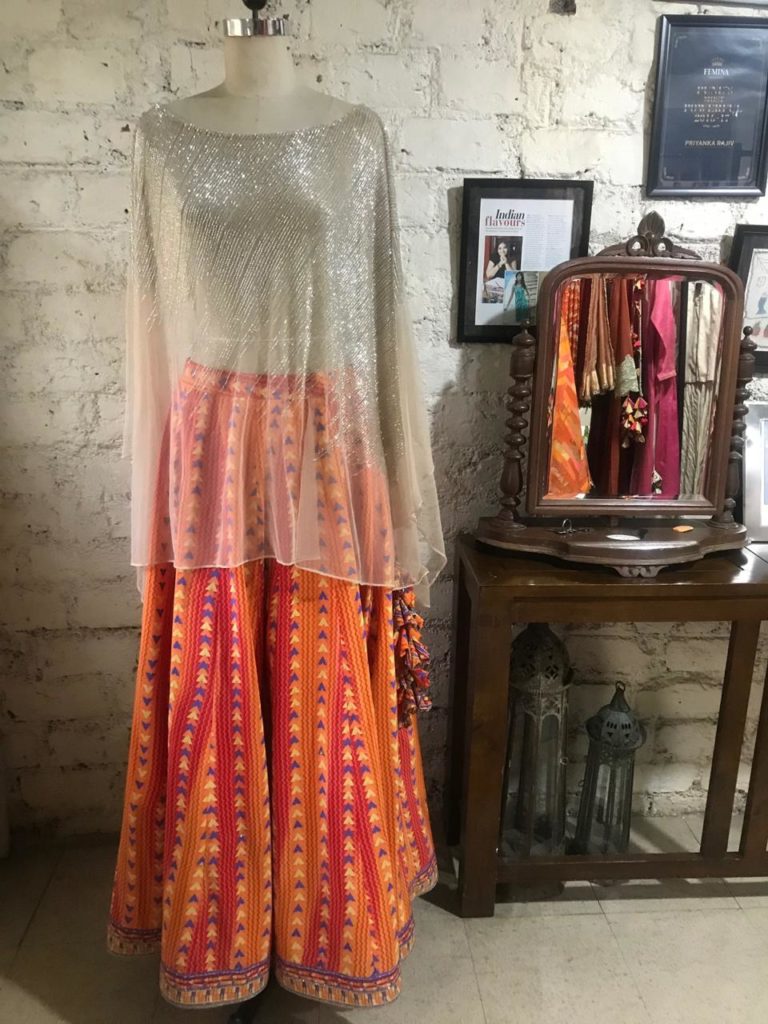
Priyanka Raajiv endeavors to intertwine the threads of this connection that transcends time and weave a story within traditional handloom fabric. A parallel softness lies in the narrative of restoration: it is done carefully with the expert skill of artisans who have learned the craft from their grandparents.
The Indian fashion designer began imbibing upcycling from day 1 into the brand philosophy and gave it a signature touch. The modern woman yearns for a continuation of intuitively structured pieces while metamorphosis takes place with millennial sensibilities. Bringing about this balance of perspective in a saree or a lehenga is intricate work, taking minute details to give the antiquity an artistic finesse.
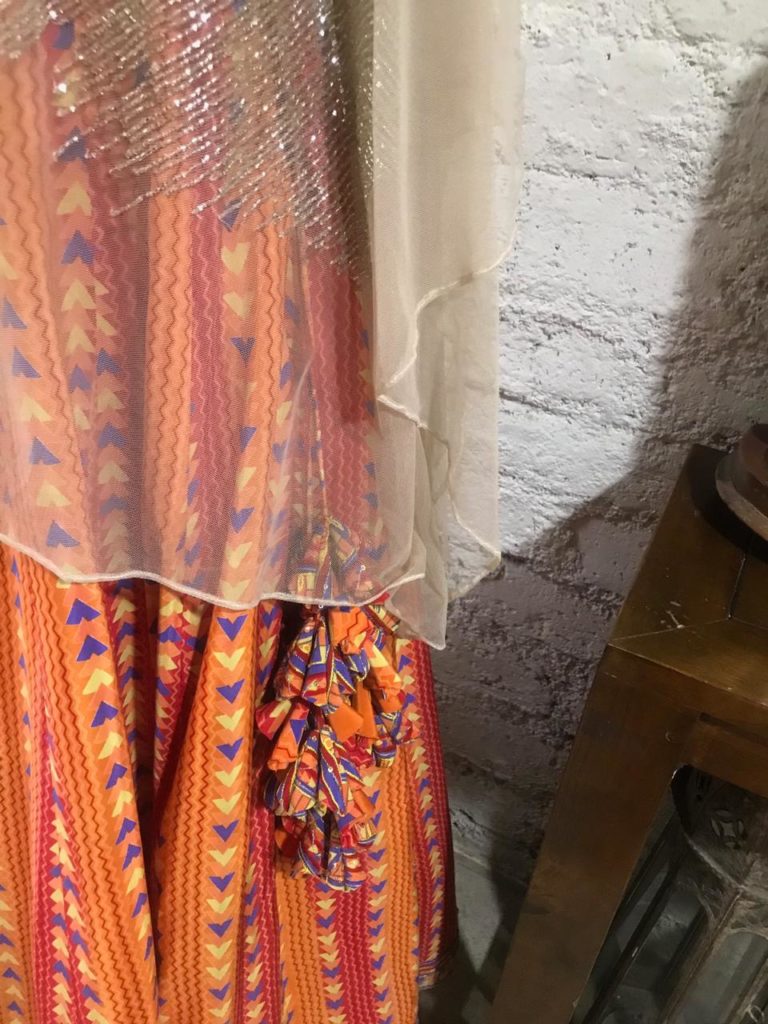
Taking a 100-year-old Paithani saree or a 30-year-old kurta that is worn out and adorning it to create eloquent pieces of urban shade is a skill that revolves around the fourth R of sustainability- repurpose. A grandmother or a mother-in-law cherishes the memories tied into the loom of each saree, each lehenga that they have doned as a kaleidoscopic shrine of their life.
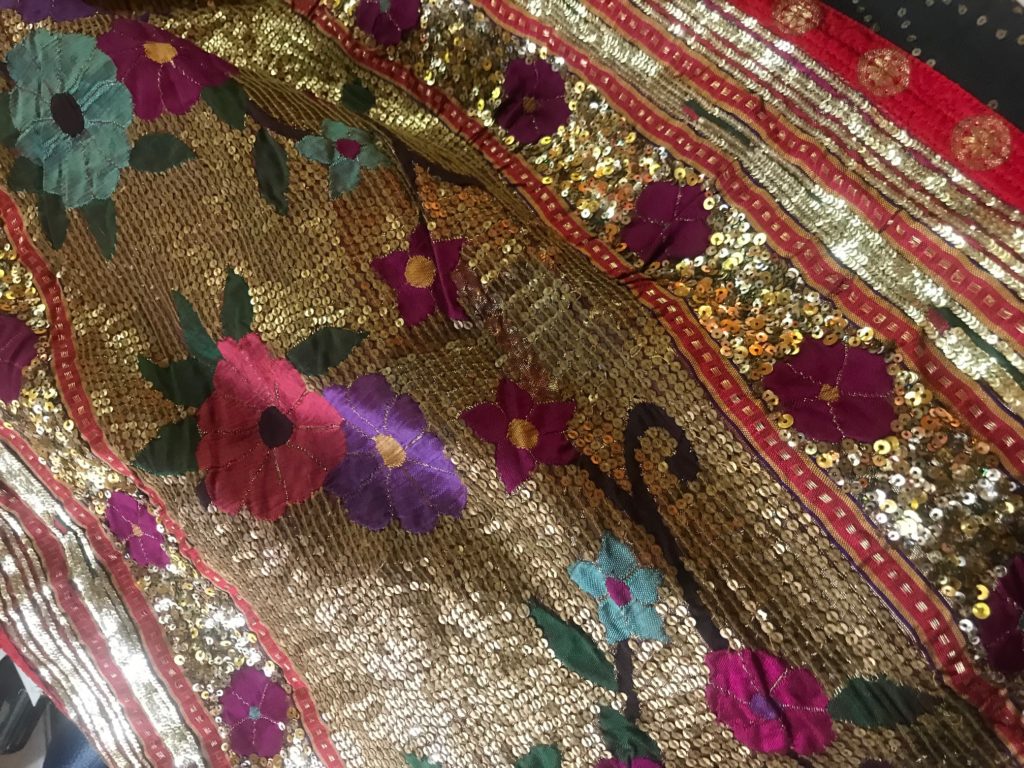
To pass this on, Priyanka Raajiv consults her clients with a honed knowledge of silhouettes and fabrics, writing biographies into a restoration, like a family repository hidden in its essence. The soul of this process lies in the translation of retaining the exclusivity of a piece while using antique zardozi, sequins, and embroidery to reveal the deliberate rarity of the original fabric.
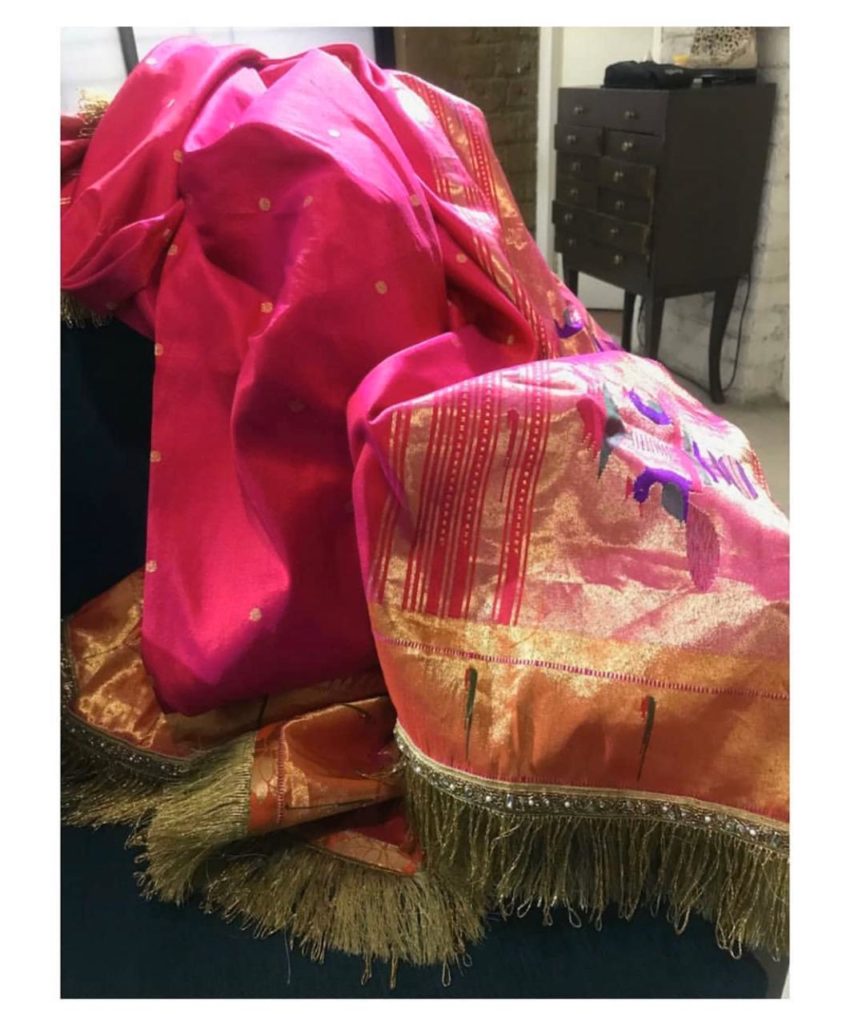
Roop has been an essential part of Priyanka Raajiv label since it’s conception, curated with an eco-conscious mindset, storytelling within a garment’s unrestricted flow: a tale of transformation.
Apr
Banished by Mother Earth to reflect, to rethink and to re-establish; the COVID-19 pandemic has granted us all with so much time to converse with our minds.
With the sudden lockdown, the fashion industry saw an unprecedented stop in its production and sales. With everyone working from home and clients asking us to hold on to a few projects, we were in a pickle too. With panic and a rush of anxiety, we got onto rewriting and restructuring our functioning as an agency. I read many reports on analytics explaining the next thing to do for creative businesses. Not a single report or an article tried to articulate the importance of basic values that would save us all as agencies, not just during these uncertain and challenging times, but for the rest of the millennium.
A moment of reckoning made me write down as to what the future for creative agencies holds. The most obvious point lies in underlining the factor of going digital vigorously.
But would that be enough? What about the morals and values that we tend to erode while dealing with projects? What about neglecting the well-being of your employees and running after deadlines?
These things urged me to sit down and note a few points that could help our agencies to think better and to create better.
1. The most significant thing to practice would be to unmask ourselves as an agency. To be who we are without a hue of pretense and badge our authenticity.
2. The second thing would be to focus on quality rather than quantity. It’s not the numbers that define us, it’s the content and the soul of our brand connected to the clients that define us.
3. This biblical opportunity to reflect has also helped me understand the need to incessantly promote the strong values and morals that the company believes in and not letting anyone manipulate these.
4. Pay heed to your employees’ mental health and open your minds to help them indulge in a relaxed conversation with you.
5. Foreground humanity; when that’s done right, your organization is molded with strength and courage. Let commerciality evaporate behind the curtains.
6. Find the long lost soul and make it the conversation starter for your next pitch without mincing words.
7. Focus on branding, it is something you cannot buy or sell, branding is evolutional. Let others speak about your brand and its oeuvre right now. It is what you choose to be, so let’s be wise.
8. Last but not the least, make Chai for your team once in a while and maintain the level of humor and sarcasm.
Stay Home, Stay Safe.
Rutuja Kamble
Creative Director & Founder
Ploti
Apr
A window to Indian sensibilities around sustainable practices, Vaishali S’s new flagship store interiors are an intracultural homecoming that brings a raw essence to the room.
Within the doors and windows of the reminiscent interiors are held narrative allegories of rebirth. Vaishali S built this store much like her eponymous label, with scrupulous detailing and a personal touch to each sculptural silhouette.
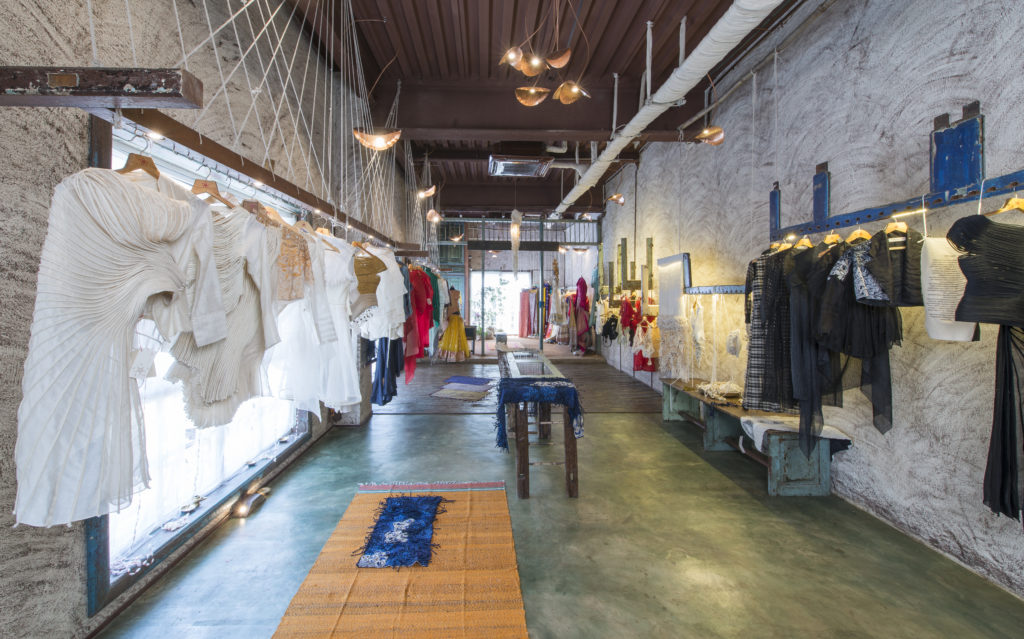
Doors from the abandoned dumping grounds of Saki Naka and Jogeshwari picked to give these pieces of wood meaning again, transform the unpurposed slabs into a layered family of benches, doors and window frames is a responsible effort that draws tenacity to the store.
To glimpse through the kaleidoscope of these stories would be akin to an autobiography of the store doors:
‘I remember everything. Every single family that has made its humble abode within my confines, and the tear as I was pulled away from my ancestral home. The bumps of the truck dislodged me, and there I was, stripped of all meaning, lying at the bottom of a dumping ground.
I didn’t feel sorry for myself, I only felt the loss of a home. This raw emotion settled into my surface for decades like water seeping into crude wood.
Then, I was picked up and brought back to life. As I survey the grandiose of the Kalaghoda precinct, I feel like a humble passenger in the train of life, sitting next to a colonial Englishman smoking a pipe, but I remember everything.
I remember with fondness the families that closed me into their hearts while building a home for themselves. I hope that when you come to visit, you will sense nostalgia in this simple villager in your midst.’
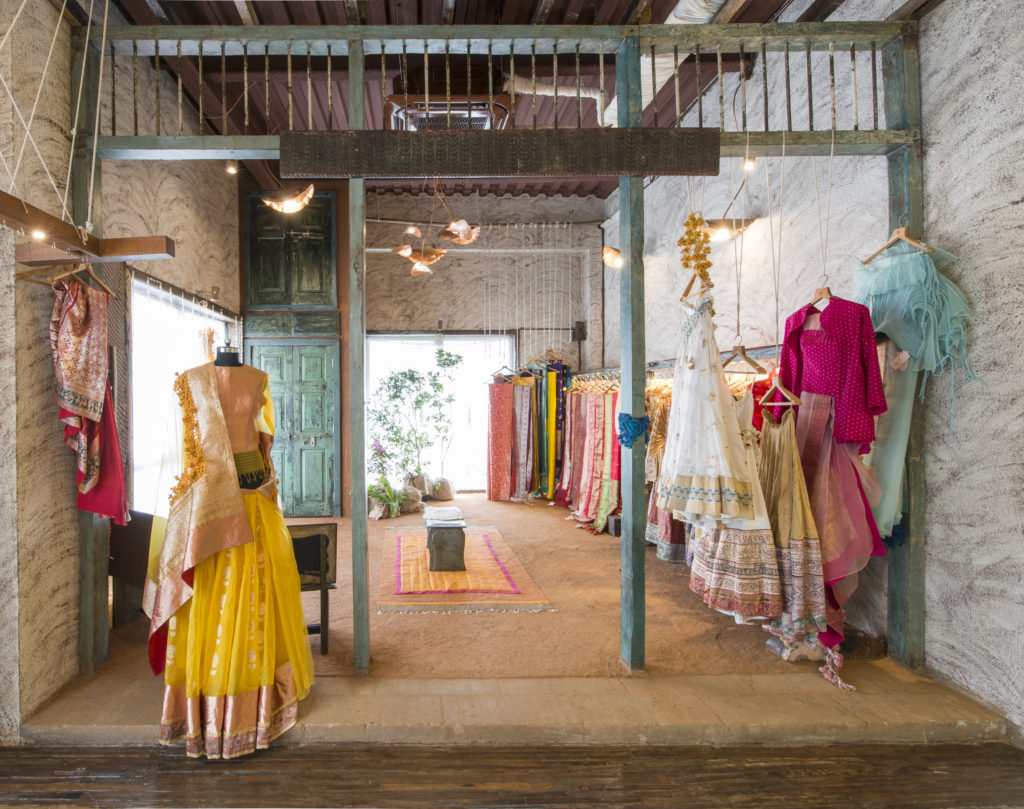
The ancient craft of handloom weaves everything together here, brings back fusion in texture, an orchestra of form. Shaded in copper-bronze, rock, mud, and wood, the color palette of these interiors is an uninterrupted flow of hue, that has come together guided by coincidental intuition.
This dedication to earthen furniture paints a village scene enhanced by mogra garlands that line crude edge surfaces, draped over the ethereal forms of homegrown fabrics. Each piece has a beautiful choreography that naturally coincides with the ensembles and the art. From the chair that has a grandmother’s lap thread loop around its wooden base to the simple handloom threads crisscrossing across space, the atmosphere created is one of nostalgia, but also of rememorizing a childhood home.
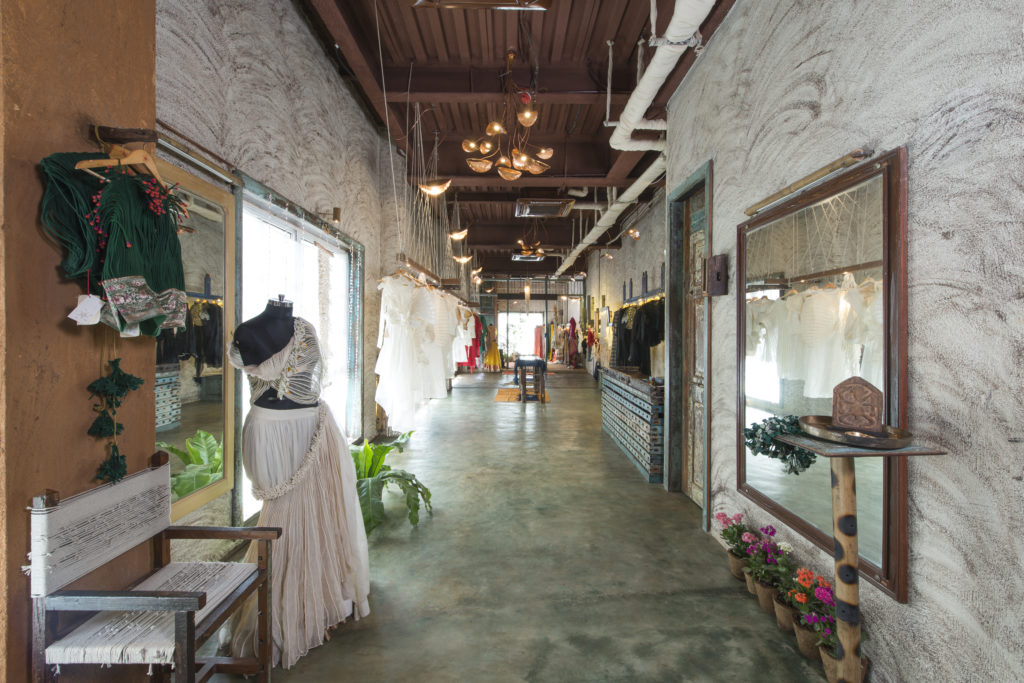
Inside the doors of Vaishali S flagship store, this artistic resonance is absorbed into hand-polished cow dung and mud walls. This perspective of keeping the interiors cool is an age-old technique taking root in the concrete city. A wall with repurposed wood turned into lamps kept integral to the unpolished façade; frames the soul of Vaishali S within its intrinsic storytelling.
The depth to each upcycled piece is a beeline to the zero-waste concept that the label has been inculcating into ensembles since it’s conception. The unspooling thread of Vaishali S store interiors is a journey to the ancestral secrets of sustainability, written with simple words, narrated aesthetically.
Apr
To weave is to create a skin out of fabric. And to feel free in one’s skin is a rarity. For marginalized persons in the global industry, this means to overcome hurdles of racism and sexism, in order to feel identified with and not labeled by the norms and standards of the fashion industry.
To achieve this threshold keeping in tandem with nature brings core sustainability to the open-lens outlook held by some niche Indian labels building a hearth of eco-sensible mindsets with their innovative approach. This marks a beautiful pause in the Indian fashion industry, where we are returning to the tenacity of our heritage, engaging in a retrouvaille of handmade crafts.
The way you look says a lot about how you identify, and where you come from, and this is the poignant epiphany taking place with Indian fashion labels today.

One such label is Naushad Ali, based in Pondicherry, a minimalist hub of global perspectives, drawn from the depth of traditional craftsmanship. Measuring crisp lines in handloom thread, this label follows a 100% natural process from yarn to dye, leading a zero-waste approach since 2014. Working with the weaving clusters in West Bengal, the label inculcates ethnic threadwork in gender-fluid apparel, keeping the tone classy and clean, cutting edge with an international touch.

Rajesh Pratap Singh, a vintage when it comes to fashion labels, has an eco-conscious lead in the industry. With it’s stellar contributions to sustainable fashion, the 1997-established label is also mapping a gender-fluid paradigm, one where the essence of responsible practices are cherished and unbiased clothing is brought into a safe space.
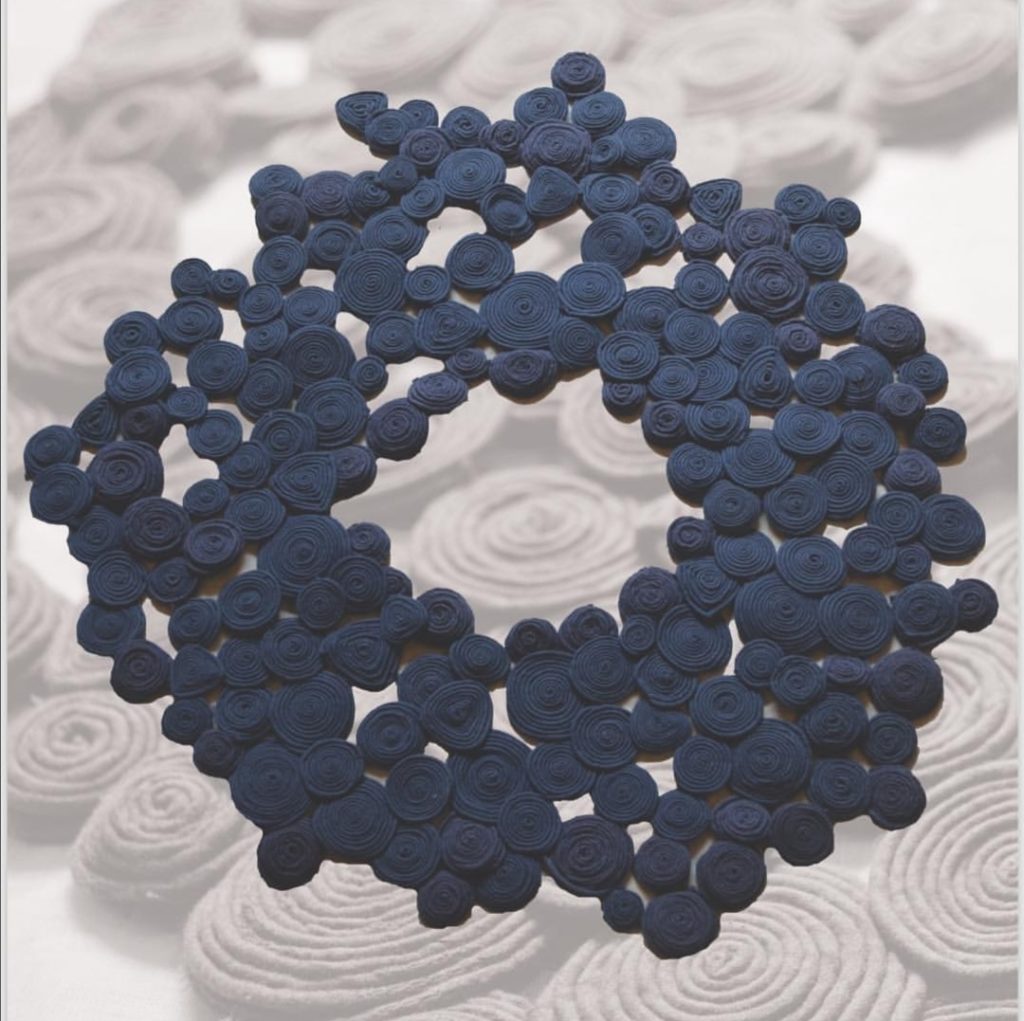
The harbinger of Khunn to international markets, Vaishali S is a cartographer of ethical and eco-conscious complexities. Maintaining a zero-waste approach since the conception of the label, Vaishali S has delved into the intricate layers of weaving communities spread across India. From marking Guledagudda, the birthplace of Khunn on the map to underlining the unique skill of Indian traditional artisanry, the label has a signature spectrum of accessories made to create security around the concept of freedom.
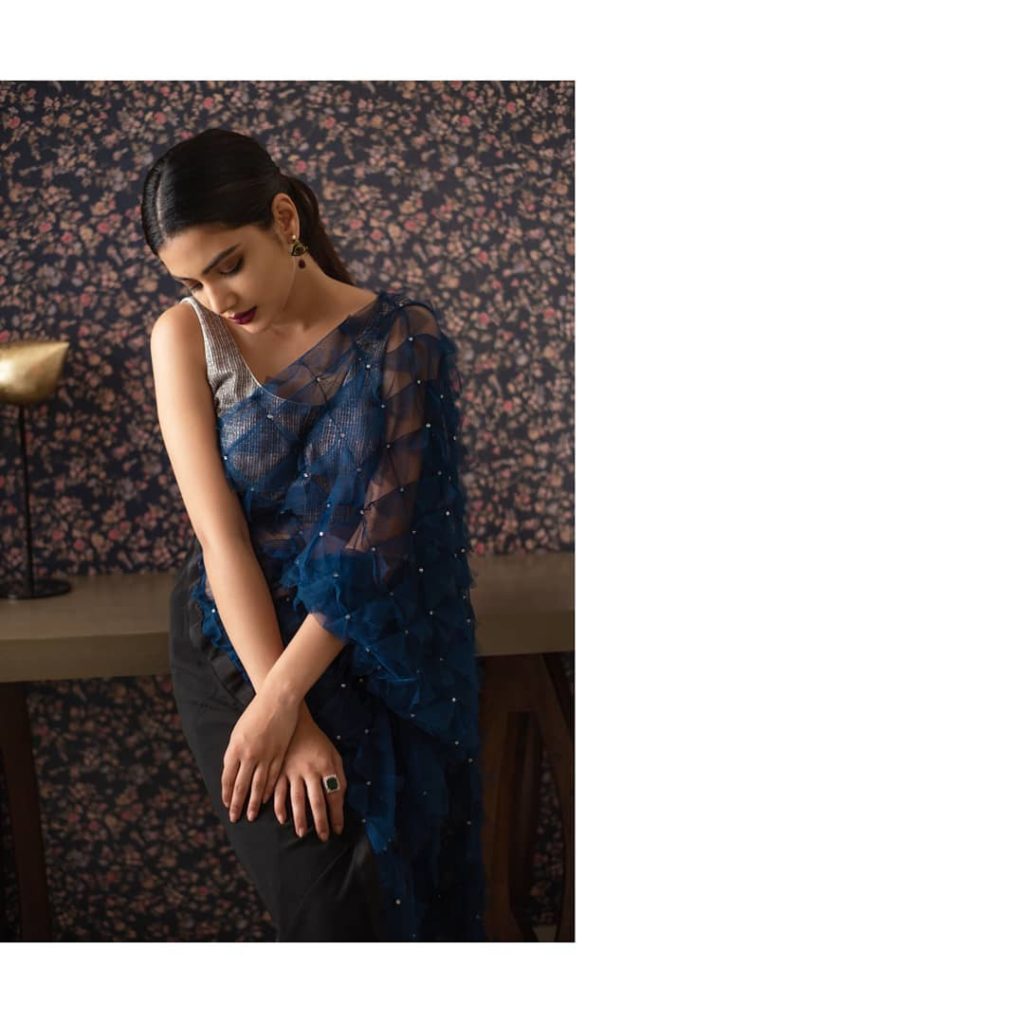
‘Jod’, a collection by Priyanka Raajiv is testimony to the integrity of upcycling unpurposed fabric pieces. In the numerous weaving cultures explored by this label, hand embroidery flourishes as an aspect to look through the lens of the artisan. In this collection, remnants of emotionally cherished fabric pieces are upcycled through handcrafting a color palette of corals, blue-greens and soothing shades of peach, airbrushed with a tone of eco-fashion sensibilities. While it caters to women, this collection has the versatility in its featherlight silhouettes of wardrobe pieces like scarves, which can be donned by anyone.

The weaver of Khadi as he is often harkened, Anurag Gupta has a long-standing authenticity in handmade apparel. From the buttons sewn on his mostly khadi garments to the hand-embroidered thread, everything is a result of manual labor, that takes the age-old skill into a painstaking endeavor of giving crisp outlines to traditional silhouettes. The label weaves garments with a gender-non-conforming flow, giving its signature touch to each handwoven silhouette, drawing a generational guideline of natural sustainability.
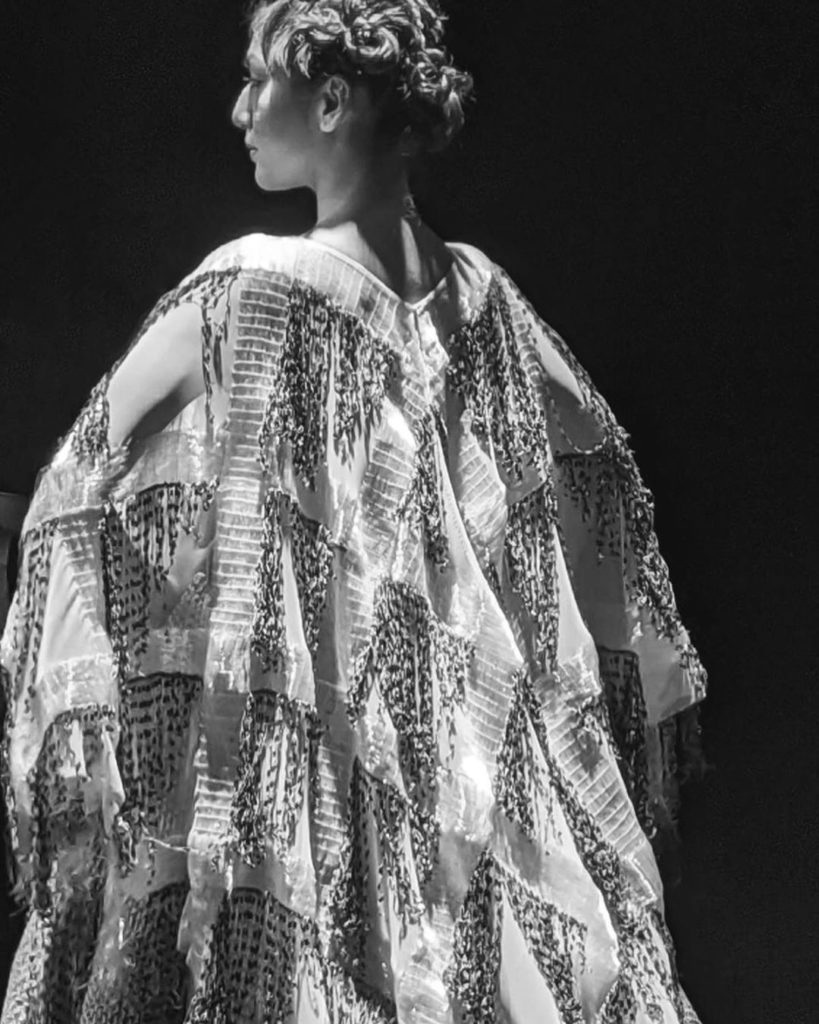
Fishnets and metallic foils re-engineered to make the fabric is a feat that AKHL has turned into a creative venture. From upcycling unmalleable materials to the detailed technicalities of fabric making, the label works with local weavers to make free-flowing gender-neutral garments. The structure of their pieces is evocative, unburdened, and unwavering in their sustainability; their forte being the reuse and upcycling of versatile materials to create ethereal elements.
The ethos of Indian sustainability lies not in the adaptation of international practices but in what is currently a renaissance of ancient techniques, rooted in the simplicity of weaving villages across the country. To blend this handspun thread into a pattern of gender complexities is yet another step towards a worldview that sees beyond the obvious and into the abstract to glean from centuries-old knowledge and apply it to the contemporary framework.
Fashion, to a large extent, shapes societal thinking. It may require sludging through years of unresolved and hidden layers, but with labels that aspire to be pioneers of eco-gender fashion and upcycled couture, the Indian handloom industry has messiahs to restore it to it’s deserved merit.
Feb
A plowed field lit up the runway in white lines, looking as much like a neon zebra crossing as a raw plantation of rice. This 21st-century requiem to an ancient crop was a unique touch to Anurag Gupta’s ‘Kalanamak’ collection at Lakme Fashion Week Spring-Resort 2020.

Kalanamak is one of the finest rice in India, grown at the foothills of the Terai belt in Siddarth Nagar for centuries. It is fabled that when Buddha was passing through the Bajha jungle, he was stopped at the Matha village by the people to whom he gave the rice he was carrying as ‘Prasad’. This tale is so integrated into the culture that Anurag Gupta, as a child thought it was a common children’s story. It was only later that he discovered the stories he grew up listening to are losing their polish, much like the raw black husk of the rice is dying into ignorance.
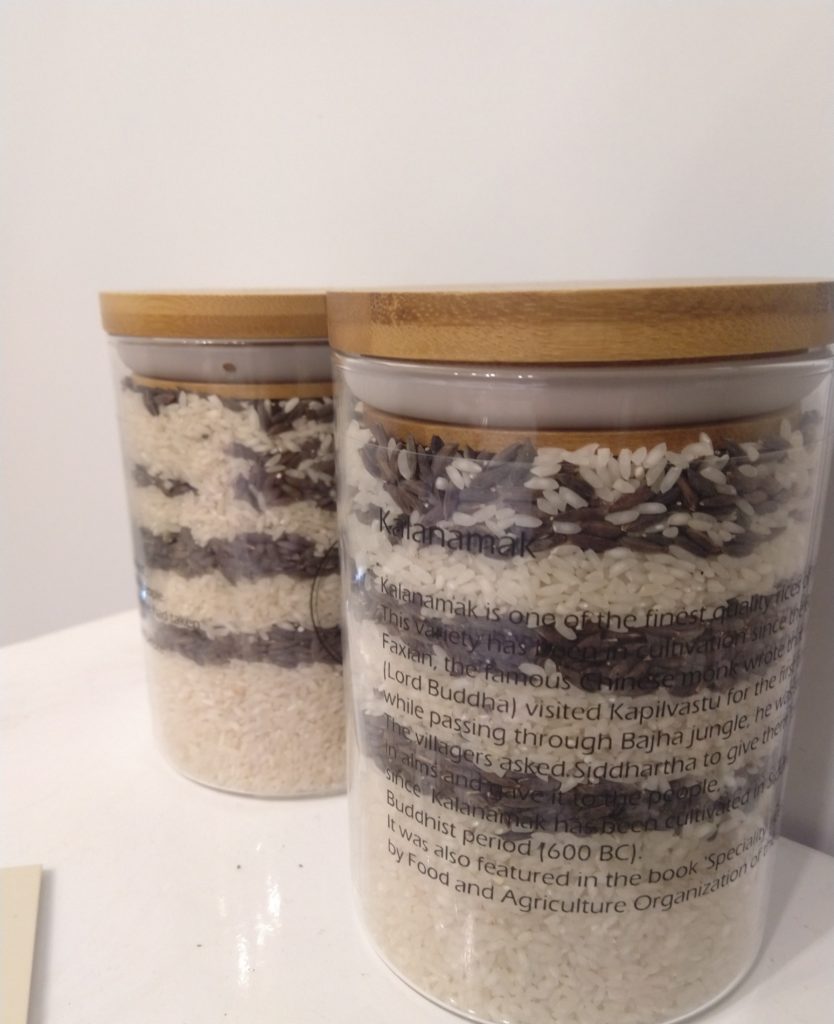
It was a personal journey to then inculcate elements of this profound history of farmers and of his community into the Khadi collection. Motifs of rice sheafs adorned white floating garments, a lightweight soliloquy to the ironic endeavor laden with struggle.
Returning to our roots with an emphasis on Khadi, contemporary silhouettes lined the show, going street with crisp lines, balancing chic with a sartorial approach. Transported to European ease with the effortless, intriguing frames, the garments created a sophisticated niche with stalks of rice and local embroidery edging the flow of asymmetrical hemlines.

The revival of ‘Kalanamak’ in the unpolished threads of Khadi stands in solidarity with the depth of thought that has gone into each design, from the hues of a clear blue sky and minimal lines of a khet on a basic, breezy canvas.

Anurag Gupta as a label brings the artistic expression of today to the tales of the past, cultivating a profound appreciation for the black pearl of Uttar Pradesh.
Jan
“All design practitioners can get stuck at times, but what I value the most is the rare time that one is in the flow…oblivious to the rest of the world, totally focused on a concept or idea.”
Hema Shroff Patel, founder of Amba experienced this soulful connection on the banks of the river Narmada. Working with the Holkars at Rehwa Society, a Maheshwari handloom charitable trust, she began her exploration into weaving at a grassroots level with a simple appreciation for the handwoven cotton fabric with small borders which she had tailored into kurta pajamas for children. She organically grew from this homegrown affair to promoting and preserving the Indian handloom industry.
When asked about the current sustainability buzz, her words reflected her empathy towards Indian artisanal crafts. As a designer, sustainability is an inquiry into oneself, and the ideology goes deeper than a superficial trend. This, for Amba, begins at home: in the profit-sharing scheme, they seek an organic business model, upskilling the artisans and giving a touch of humanistic structure to the entire hierarchy.
Weavers have the advantage of working from home and have access to social welfare programs held in the community and organized by Patel. When asked about how the weavers are empowered, Patel said, “Weaving is a good source of income, especially with families where all members participate and work. Several processes are ancillary practices that aid the weaver. Hand spinning fiber, bobbin winding, and warping all fall under this category.”
A cultivated understanding of weaving as an indigenous art has led to Amba’s transparent foundation and function as socialistic entrepreneurship.
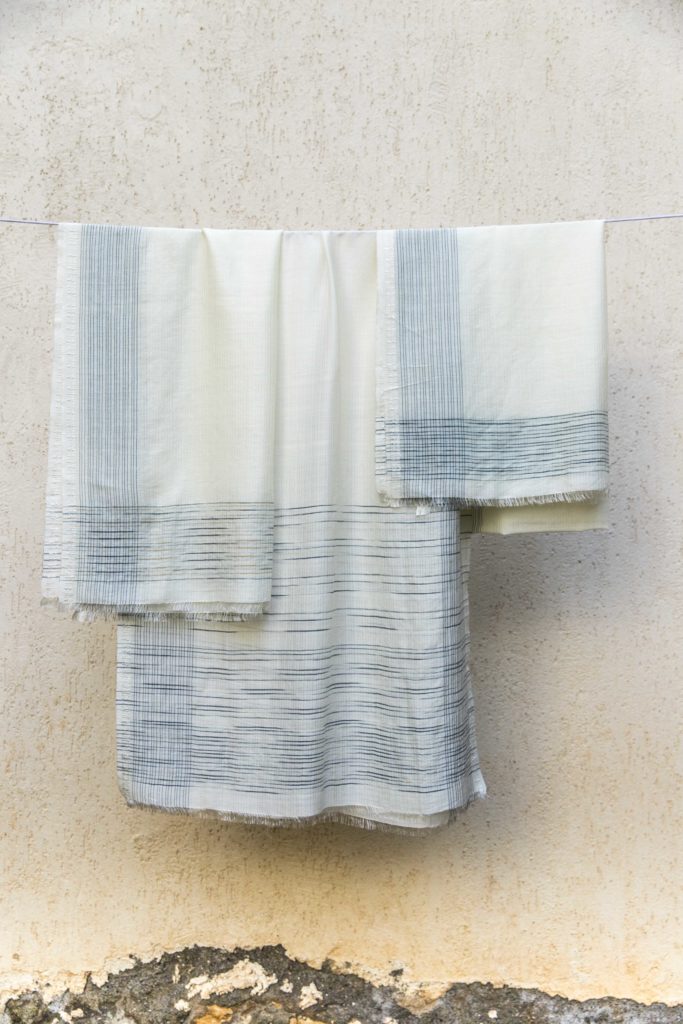
“It is a great debate these days over art versus craft, but where do handwoven textiles fall in this category?” Indian textile history marks the use of handloom weaves dating as far back as the Harappan civilization, tracing a path through a time when royals coveted textiles and artisans were members of a guild. The Arthashastra mentions specific fabrics like white barkcloth, Banaras linen, cotton from South India and blankets of soft, wispy fabric. The techniques and mathematical patterns involved in weaving these have been passed down through generations in a household, the industry being notably inclusive of women in times when they weren’t allowed to hold jobs.
In medieval times, the industry flourished when a ruler was inclined towards the arts and distinct fabrics from local regions were cherished.
With respect for this deeply rooted legacy, Amba dedicates itself to handwoven fabrics and natural dyeing. Natural dyeing requires in-depth research on the complexity of fibers used to weave fabric and the strength at which a particular fabric absorbs dyes. It can also be affected by the count of the yarns. But after this intricate process, the design reveals itself from months of sampling on a loom.
She admires interesting craft techniques in other contemporary designers as well, noting the innovative perspective on Bodice’s work in Kullu on craft traditions. She also admires Padmaja’s spirit in her dedication to working with WomanWeave during the four years of fabricating design banks for her silhouettes.
As any ethically inclined label, Amba, alongside its craft technique evolution, endeavors to underline responsible living. Patel’s response to how a label can follow responsible fashion states that, “Every label that concerns itself with these practices need only to address the issues in the industry related to child labor laws, the factory environment in which their clothes are woven, stitched or made, or how they deal with their waste, and by-products of their design.” This vision is crucial to our commitment to the earth, and it must be passed on to the newcomers in the field.
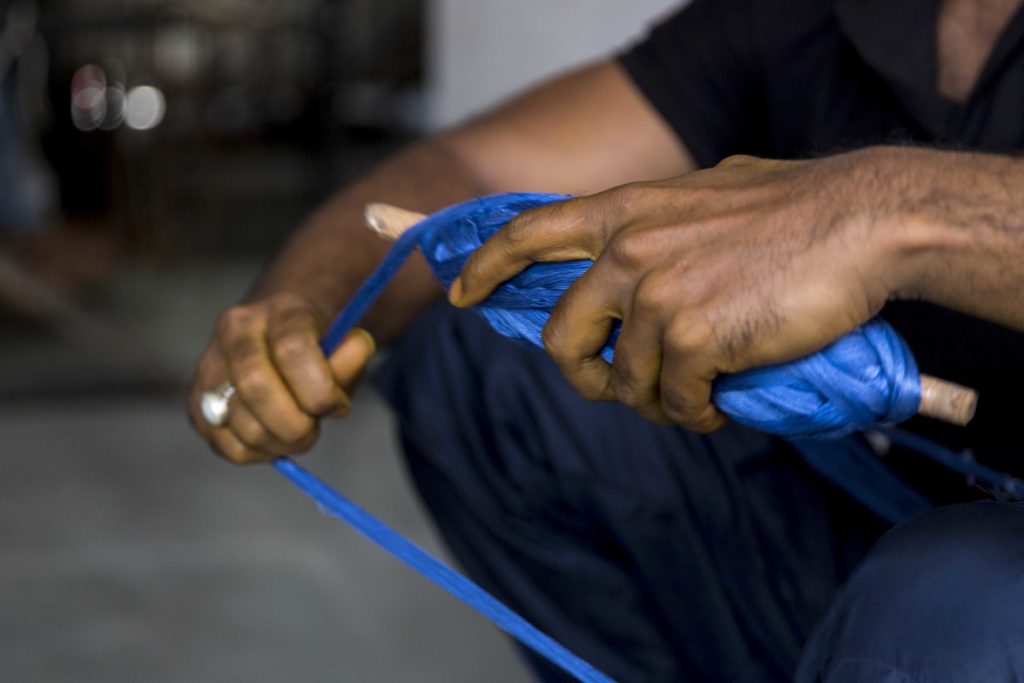
Patel looks to the newcomers as well, like Wasim their master weaver, trained at The Handloom School, founded by Sally Holkar, to carry out Amba’s work. “Our goal is to share our knowledge in fiber development and keep pushing contemporary boundaries with our traditional two peddle, double shuttle loom.”
Her message to handloom weavers starting their sustainable brands is to craft their textiles with instinctive attention to their regional crafts, as weaving is becoming homogenous.
“It is important for weavers to learn how to reinterpret traditional design elements with contemporary design skills which will retain their textile DNA, so one always knows the origin of the textile.”
This is the key to continuing the Indian textile heritage, the tenacity of handloom weaving, not borrowed, but grown from within. Amba stands for these values striving to pass down these skills from one generation to the next.

